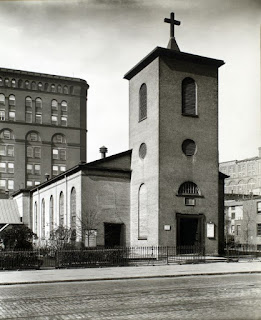Exposición Muy Recomendada.Archivo Paco Gómez. El instante poético y la imagen arquitectónica.Sala de Exposiciones Canal de Isabel II C/ Santa Engracia, 125
Lleva un tiempo en cartel pero por motivos varios no he podido ver esta exposición hasta hace unas fechas.
Quisiera decir que "nunca es tarde si la dicha es buena". Es una de las mejores exposiciones de fotografía que, pudiendo decir, es de o sobre arquitectura la realidad es que nos presenta un país en un tiempo y lugar.
Geográficamente se centra preferentemente en el entorno de las ciudades, en los momentos en que en España la gente del campo empieza a venir a la ciudad y ésta empieza a crecer extendiendose al campo circundante que, a la vez, es rural y urbano durante un tiempo.
Por otra parte se relaciona con los arquitectos,grandes arquitectos de la época a los cuales documenta sus obra, publica sus fotos en la revista arquitectura. Como ya comenté en numerosas ocasiones ambas disciplinas van de la mano, se utilizan o sirven entre sí desde la mitad del siglo XIX.
Pero también es Paco Gómez un gran retratista tanto de sus amigos fotógrafos, grupo la Palangana, como de gente anónima que hoy vive, en cierto modo, en estos retratos.
Se acerca también a la fotografía abstracta a través del graffiti, de las huellas del hombre en la pared.
En fin, la recomendación es sencilla, vayan a verla y disfruten.
Sala Canal de Isabel II. Del 20 de abril al 24 de julio.
La muestra Archivo Paco Gómez. El instante poético y la imagen arquitectónica, está compuesta por cerca de cuatrocientas piezas, entre fotografías y revistas cuya selección es el resultado de un ingente trabajo de investigación llevado a cabo por el comisario, Alberto Martín, en colaboración con la Fundación Foto Colectania que custodia el archivo del fotógrafo desde el año 2001.
La muestra Archivo Paco Gómez. El instante poético y la imagen arquitectónica, está compuesta por cerca de cuatrocientas piezas, entre fotografías y revistas cuya selección es el resultado de un ingente trabajo de investigación llevado a cabo por el comisario, Alberto Martín, en colaboración con la Fundación Foto Colectania que custodia el archivo del fotógrafo desde el año 2001.
Foto Colectania
Presentación del archivo de Paco Gómez
En noviembre de 2001, los herederos de Francisco Gómez acordaron con la Fundació Foto Colectania la donación del archivo fotográfico del autor con el compromiso de custodiarlo en las mejores condiciones. Desde entonces, los negativos (más de 24.000) y copias del autor (cerca de 1.000) han pasado a ubicarse en la fundación que es titular en exclusiva de los derechos de explotación de la obra de Paco Gómez. Actualmente, se está llevando a cabo el tratamiento integral del archivo con el objetivo de difundir su legado, del que ya se puede consultar una parte en esta web.
En la misma página se puede leer su Biografía
Portfolio de Paco Gómez.
Se pueden ver numerosas fotos
Paco Gómez: fotógrafo de la revista Arquitectura UNAV
Comentario Personal sobre la fotografía y los fotógrafos españoles de esta época centrándonos en el caso presente de Paco Gómez pero que, en cierto modo, se puede aplicar a otros como, por citar solo uno a Kindel, si citamos a dos añado a Pando
Al ver la exposición me acordé de las fotos que hizo Berenice Abbott sobre Nueva York unos años antes y también de algunas fotos de Walker Evans o Ben Shahn realizadas para la FSA.
Guardan un cierto paralelismo con las de Paco Gómez pero con la diferencia, el significativo hecho, de unas referirse a Nueva York y otras a ciudades españolas......perdidas...en comparación con esta gran metrópoli. Unas expuestas en el MOMA y otras no...
No quiero decir ( no soy quién) que ambos fotógrafos sean de igual categoría, que Abbott o Evans o Ben Shahn sean como Gómez pero sí quiero señalar que existe una generación de fotógrafos españoles perdidos, digamóslo así, por falta de documentación, exposición, y presentación en entornos internacionales.
Los americanos, USA, sabe mirar su pasado, sus ciudades y ponerlo en valor, nosotros, en fotografía, no lo hacemos y ya va siendo hora que lo hagamos gracias a exposiciones como esta, como las de fotógrafos de arquitectura que hizo el ICO etc. etc. Pero, desde luego, nos falta mucha revisión ¿Cuando una gran exposición sobre el archivo Pando? ¿y otra sobre Kindel?
Es por esto que quiero felicitar a Foto Colectania por esta exposición por presentar esta exposición y conservar, protegiendo a la vez, un fondo tan bueno como el archivo Paco Gómez
Changing New York
Photographer Berenice Abbott proposed Changing New York, her grand project to document New York City, to the Federal Art Project (FAP) in 1935. The FAP was a Depression-era government program for unemployed artists and workers in related fields such as advertising, graphic design, illustration, photofinishing, and publishing. A changing staff of more than a dozen participated as darkroom printers, field assistants, researchers and clerks on this and other photographic efforts. Abbott's efforts resulted in a book in 1939, in advance of the World's Fair in Flushing Meadow NY, with 97 illustrations and text by Abbott's fellow WPA employee (and life companion), art critic Elizabeth McCausland (1899-1965). At the project's conclusion, the FAP distributed complete sets of Abbott's final 302 images to high schools, libraries and other public..
St. Lukes Chapel, 483 Hudson Street, Manhattan.
Gramercy Park, west side looking southeast, Manhattan.
Rhinelander Row, I. Seventh Avenue between 12th and 13th Streets, Manhattan.
Walker Evans New York Public Library





